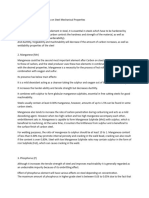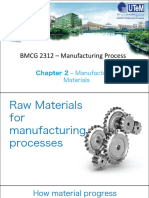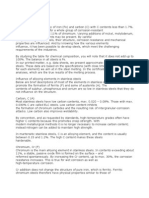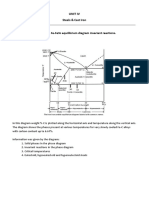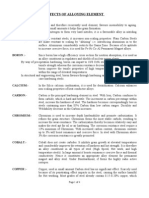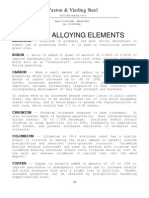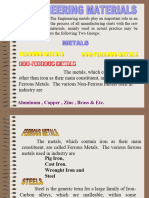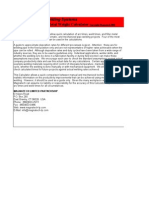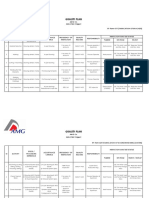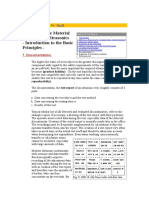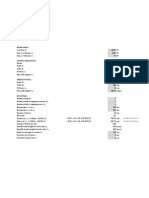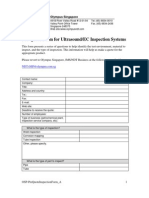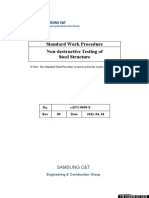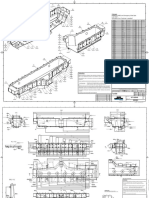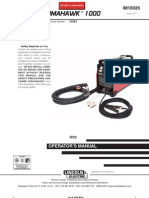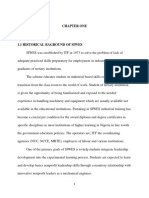0% found this document useful (0 votes)
18 views8 pagesSteel Alloying Elements Guide
The document discusses the effects of various alloying elements on steel, detailing how elements like carbon, manganese, and chromium influence properties such as strength, ductility, and corrosion resistance. It also covers the composition and applications of different types of electrodes, including INDARC-613 and chromium-based, nickel-based, and cobalt-based electrodes, highlighting their roles in welding and specific industrial applications. Overall, the document emphasizes the importance of alloying elements in enhancing the performance and suitability of steel for various uses.
Uploaded by
prathamkantu3Copyright
© © All Rights Reserved
We take content rights seriously. If you suspect this is your content, claim it here.
Available Formats
Download as DOCX, PDF, TXT or read online on Scribd
0% found this document useful (0 votes)
18 views8 pagesSteel Alloying Elements Guide
The document discusses the effects of various alloying elements on steel, detailing how elements like carbon, manganese, and chromium influence properties such as strength, ductility, and corrosion resistance. It also covers the composition and applications of different types of electrodes, including INDARC-613 and chromium-based, nickel-based, and cobalt-based electrodes, highlighting their roles in welding and specific industrial applications. Overall, the document emphasizes the importance of alloying elements in enhancing the performance and suitability of steel for various uses.
Uploaded by
prathamkantu3Copyright
© © All Rights Reserved
We take content rights seriously. If you suspect this is your content, claim it here.
Available Formats
Download as DOCX, PDF, TXT or read online on Scribd
/ 8
